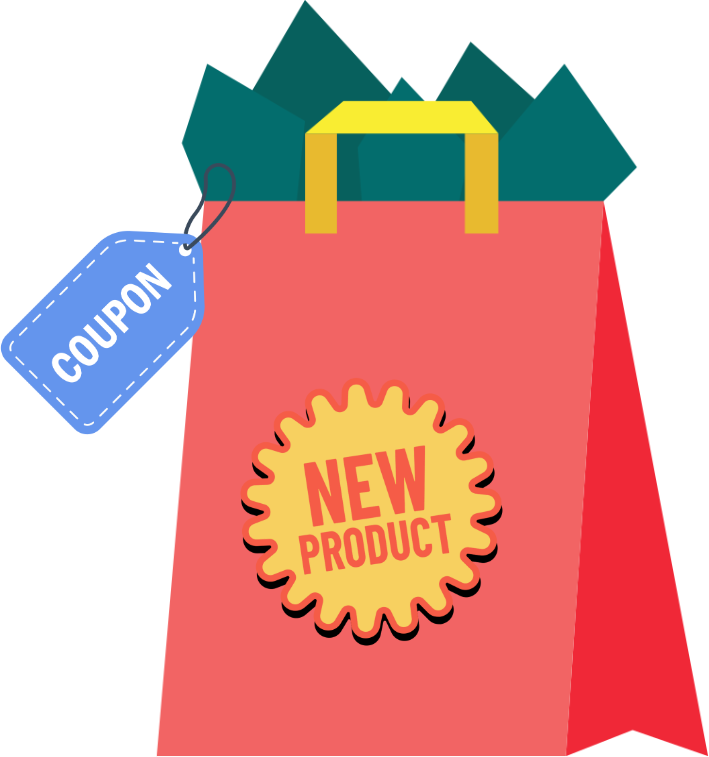|
Create coupons with purpose
& outshine the competition
|
|
In order to succeed with coupons you should have a very clear understanding of your objectives.
Here are some strategy examples you could use as inspiration before launching your first coupon book.
|
|
|
|
Boost sales
|
|
Strategy: Increase immediate sales during slow periods.
|
|
- Identify slow sales periods: Analyze historical sales data to pinpoint when sales tend to drop.
- Set clear sales goals: Determine the specific sales targets you want to achieve with the coupon campaign.
- Design compelling discounts: Create attractive and relevant discounts or promotions.
- Promote through various channels: Utilize email marketing, social media, and advertising to reach your target audience.
- Monitor and analyze results: Continuously track sales during the campaign to adjust strategies as needed.
|
|

|
|
|

|
|
New Customer Acquisition
|
|
Strategy: Attract new customers to try your product or service.
|
|
- Define your target audience: Understand the demographics and preferences of your potential customers.
- Create an enticing offer: Develop a coupon that provides significant value to first-time customers.
- Promote across channels: Use digital marketing, social media, and offline channels to reach a wider audience.
- Provide an excellent experience: Ensure that new customers have a positive experience to encourage repeat business.
|
|
|
|
|
Customer Retention
|
|
Strategy: Reward existing customers and encourage repeat purchases.
|
|
- Segment your customer base: Divide customers into groups based on purchase history or loyalty.
- Develop personalized offers: Create tailored coupons or promotions for each customer segment.
- Send targeted communications: Use email marketing and personalized messages to deliver your coupons.
- Implement a loyalty program: Reward repeat purchases with points or discounts for ongoing engagement.
- Collect feedback: Continuously seek customer feedback to improve their experience and tailor future offers.
|
|

|
|
|

|
|
Clear Inventory
|
|
Strategy: Use coupons to move excess or seasonal inventory.
|
|
- Identify surplus products: Determine which items need to be cleared from your inventory.
- Create clearance offers: Offer deep discounts or bundle deals to incentivize purchases.
- Highlight urgency: Use messaging like ’’limited time offer’’ to create a sense of urgency.
- Promote on various platforms: Use your website, social media, and email marketing to showcase clearance items.
- Monitor and adjust: Track inventory levels and adjust promotions as needed to meet inventory-clearing goals.
|
|
|
|
|
Product Launch
|
|
Strategy: Generate excitement and initial sales for a new product or service.
|
|
- Build anticipation: Tease the upcoming product launch through social media and email marketing.
- Create exclusive offers: Develop coupons that are specific to the new product or service.
- Leverage influencers: Partner with relevant influencers to build buzz and share your coupons.
- Launch event: Host a launch event or online webinar to showcase the new product or service and grant early access to your special coupon book to customers that assist your event.
- Gather feedback: Encourage early customers to provide reviews and feedback to improve your product.
|
|

|
|
|

|
|
Cross-Selling
|
|
Strategy: Use coupons to encourage customers to explore related or complementary products or services.
|
|
- Identify cross-selling opportunities: Determine which products or services naturally complement each other.
- Create bundled offers: Develop coupons that provide discounts when multiple items are purchased together.
- Promote cross-selling: Showcase these offers prominently on your website and in marketing materials.
- Train sales and support teams: Ensure your teams are knowledgeable about cross-selling opportunities.
- Measure success: Track the impact of cross-selling coupons on average transaction value and customer satisfaction.
|
|
|
|
|